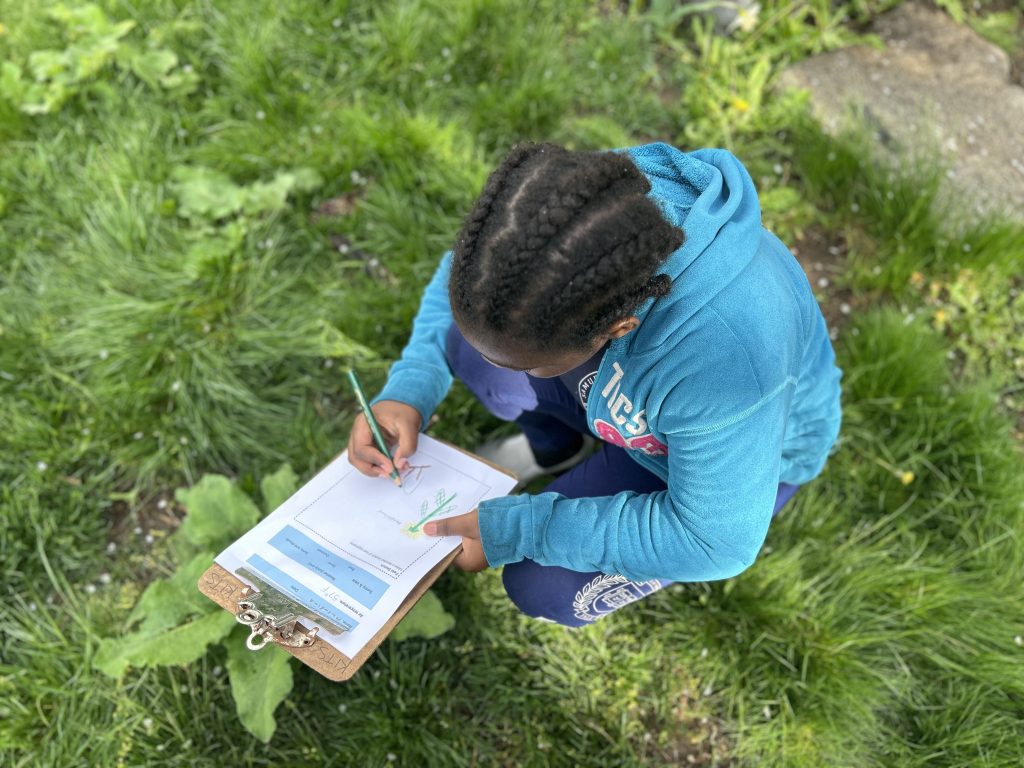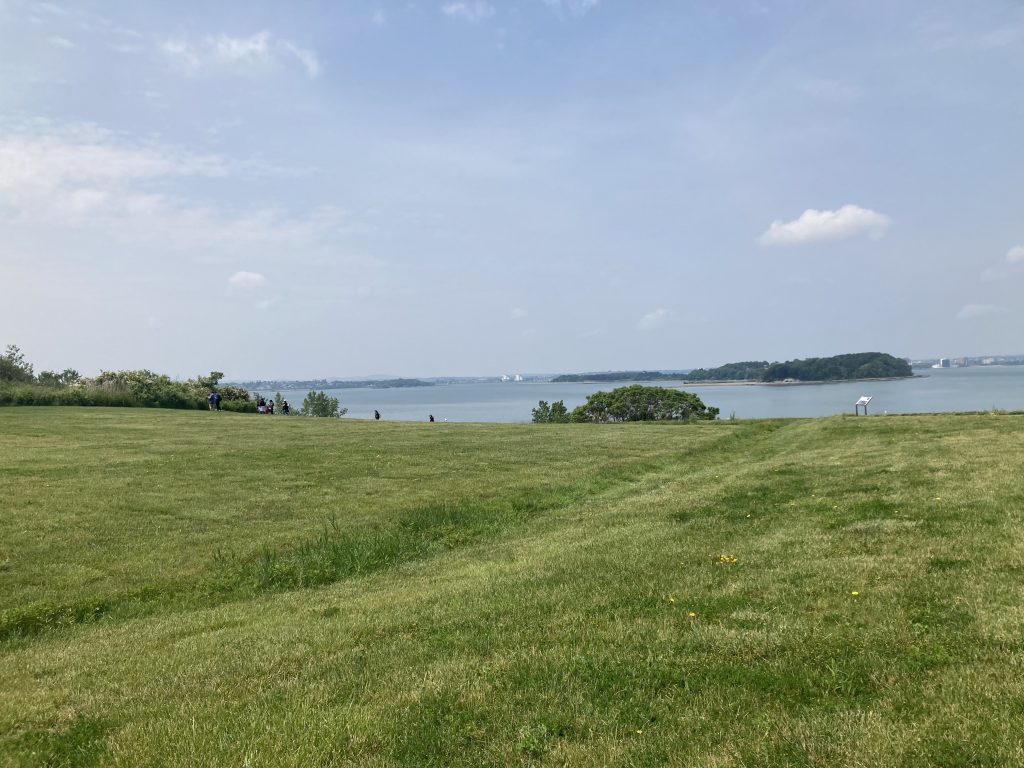Having Fun-ology with Fifth Graders


By Rebecca Shoer
Education and Engagement Program Manager
This spring, the Stone Living Lab (SLL) and National Parks Service (NPS) staff created and piloted a series of brand-new lessons with fifth graders at Samuel Adams Elementary in East Boston. Like our 2022 lessons, this series explored place-based citizen science and climate learning answering the essential question: How do we know something is changing? This year we focused on answering our question through the lens of phenology: the study of seasonal change.
We started off in early spring in the classroom, sharing the idea of a “living laboratory,” and showing students that science can be done anywhere! We then introduced the field of phenology, and asked students how we as humans observe changes in seasons, from temperature shifts and changing leaves, to the sounds we hear outside. They were then left to wonder: how do other species know when the seasons change?
In our second lesson, students read about three native species and how they detect seasonal change: Eastern tent caterpillars, American robins, and Black cherry trees. They also learned about how these species are connected, and how they each depend on one another. After walking through what a “normal” year of seasons would be like for these species, we then thought about years with extreme weather events. How would a robin respond to an unusually hot spring? How would caterpillars react to a sudden cold snap? And how could scientists observe these responses?
The third lesson brought us into the field to an incredible spot just steps from the school: the Rockies Urban Wild. This site has been restored by the City of Boston and local partners, and now hosts native species and many fruit trees. Our students got to flex their scientific muscles by taking phenological field observations and making scientific drawings. It was also an opportunity for them to explore a unique natural area right in their neighborhood, get outdoors, and learn in a new setting.

One of our students working on a scientific illustration at Rockies Urban Wild.
Our journey culminated this June with a field trip to Spectacle Island. For many students – and for some it was their first time on a boat! Students explored the harbor with our Boston Harbor Bingo, eagerly pointing out all of the things to see and share. Once on the island we took phenological field observations, comparing what we saw and heard with what we had observed in our previous field excursion. The students spent time exploring the “saddle” of Spectacle Island, and were thrilled to learn that they got to visit when no one else was ashore!
We finished our island time learning about and analyzing the checkered past of Spectacle Island since colonization: how European settlers used and abused the island as a dumping ground until the Boston Harbor cleanup began over thirty years ago. Through innovation and collaboration, Spectacle Island was transformed from a smoking trash heap to the most visited Harbor Island. How can the lessons of this restoration help inspire us to meet the challenge of climate change? Our students had a lot to think about!

Students (in the distance) exploring the saddle of Spectacle Island.
After we boarded the ferry and headed back to East Boston, the students were in for one last surprise: being sworn in as Junior Rangers! With badges and Buddy Bisons in hand, our students are now headed off for summer vacation, equipped with tools and techniques for observing and tracking seasonal change around them. We are now hard at work compiling our lessons and materials so they can be easily accessed from our resource page!